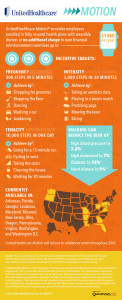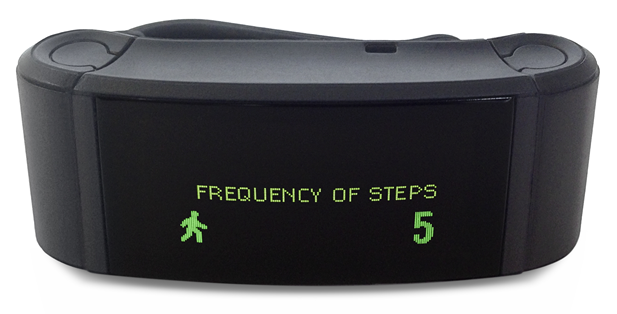 What do you get when one of the largest health insurance companies supports the development of a medical-grade activity tracker, enables data to flow through a HIPAA-compliant cloud, and nudges consumers to use the app by baking behavioral economics into the program?
What do you get when one of the largest health insurance companies supports the development of a medical-grade activity tracker, enables data to flow through a HIPAA-compliant cloud, and nudges consumers to use the app by baking behavioral economics into the program?
You get Motion from UnitedHealthcare, working with Qualcomm Life’s 2net cloud platform, a program announced today during the 2016 HIMSS conference.
What’s most salient about this announcement in the context of HIMSS — a technology convention — is that these partners recognize the critical reality that for consumers and their healthcare, it’s not about the technology. It’s about physical health, financial health, and kitchen table economics.
I had the opportunity to speak with Rick Valencia, General Manager of Qualcomm Life, a few days before HIMSS 2016 kicked off this week. “To me, this is the ultimate win-win-win scenario,” he said. That triple-win is for the health plan, for the technology company, and most importantly, for health consumers — members of UHG health plans, and for UHG employees who can opt to participate in the Motion program. To begin, the program will focus on inspiring people to be active — “to get people moving,” Valencia said.
UHG has been working on this project for well over a year, piloting to validate that it works. Now they are ready to scale the objective: to improve the health of the insured to reduce the overall costs of care for employers and for their own employees. The program will first focus on one objective: that is, to get people moving and more active, Valencia explained.
The Motion itself is a purpose-built device included in the UHG program; the insured consumer doesn’t pay separately for it. Don’t think of this as the wristband (which it is) that you can pick up at your average Big Box or discount store. This is not an over-the-counter consumer grade offering: it’s medical grade, and the personal health information generated through this device isn’t just step activity, but also senses intensity of steps taken.
UGH wanted a medical grade platform, so this is a custom wearable which, while it looks like your run of the mill wrist worn device, it’s got technology inside, hardware and algorithms, specific to this device. Motion measures steps and vigorous activities, and the app nudges users a certain number of times a day to move and get active in order to earn dollars good for use toward Health Reimbursement Account credits.
To learn more about how Motion works as part of a health benefit, here’s a description of the program on the Total Benefit Solutions portal.
Health Populi’s Hot Points: The UHG-Qualcomm Life-Motion mashup is an example of the siloed healthcare system walls breaking down to align benefits for multiple stakeholders: in this instance, the insurer, employers and plan sponsors, and consumers.
It’s well-understood that most consumers who begin using a health tracking device disband use within a matter of months; sustainability is a challenge when it comes to activity tracking for health. The UHG-Qualcomm Life alliance bakes in behavioral economics — the potentially powerful financial incentive of a discounted health insurance premium reaching nearly $1,500 per year. With U.S. families having a median income of $50,000 [before tax] in 2014, such a fiscal carrot could be very attractive.





 Interviewed live on BNN Bloomberg (Canada) on the market for GLP-1 drugs for weight loss and their impact on both the health care system and consumer goods and services -- notably, food, nutrition, retail health, gyms, and other sectors.
Interviewed live on BNN Bloomberg (Canada) on the market for GLP-1 drugs for weight loss and their impact on both the health care system and consumer goods and services -- notably, food, nutrition, retail health, gyms, and other sectors. Thank you, Feedspot, for
Thank you, Feedspot, for  As you may know, I have been splitting work- and living-time between the U.S. and the E.U., most recently living in and working from Brussels. In the month of September 2024, I'll be splitting time between London and other parts of the U.K., and Italy where I'll be working with clients on consumer health, self-care and home care focused on food-as-medicine, digital health, business and scenario planning for the future...
As you may know, I have been splitting work- and living-time between the U.S. and the E.U., most recently living in and working from Brussels. In the month of September 2024, I'll be splitting time between London and other parts of the U.K., and Italy where I'll be working with clients on consumer health, self-care and home care focused on food-as-medicine, digital health, business and scenario planning for the future...